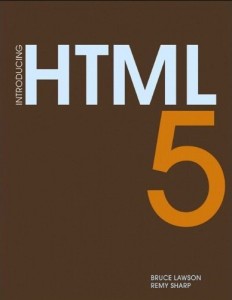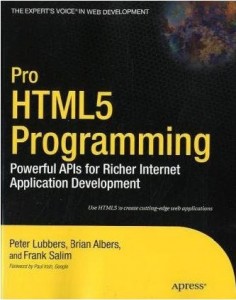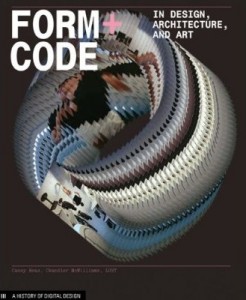Cool geeky books I read in 2010
01 Jan 2011I did read others but they were mostly boring and I can’t remember specific things to say about them.
Since buying Introducing HTML5 by @brucel and @rem I’ve been promising myself I’d write some kind of opinion on it. Now, a few months later, I’ve got another two related books I have read and like so now’s probably the time to write this post before I forget.
On the list for praise and critism are:
- Introducing HTML5 by Bruce Lawson and Remy Sharp
- Pro HTML5 by Peter Lubers, Brian Albers and Frank Salim
- Undercover User Experience Design by Cennydd Bowles and James Box
- Form+Code in Design, Art, and Architecture by Casey Reas and Chandler McWilliams
This post has become a bit of a mammoth post, it’s been in my drafts folder for over two months, but I’ve finally found the time to finish it, so here we go:
Introducing HTML5
I, like many others, continue to watch the emergence of HTML5 with some excitement. As per usual when I find a new thing that I want to know about I looked for a book on it. To me books seem to provide something that feels more reliable and authoritative than a quick blog post. Introducing HTML5 scratched this itch being the first on the scene and also being pretty keenly priced.
Bruce and Remy take turns at writing chapters in this book with Bruce mainly concerning himself with HTML5 and Remy concentrating on the new JS APIs like canvas, geolocation etc…their chatty and amusing style make the book a very easy read unlike many books for developers. I think one of the main strengths of this book is the coverage of the new HTML elements like <aside> or <section> and quick examples of where they should be used along with explanations of why. While boring to some I find the additions for dividing up sections and headers some of the most interesting as I try to build accessible websites and machine readable sites interest me.
The second half of the book is mainly on the Javascript APIs, these chapters are written to the same high standard as the HTML chapters, I admit I skimmed over the canvas chapter, as it doesn’t really interest me. The javascript chapters don’t fall into the traps that some books do and provide endless code examples, or depend on previous code examples too much. Of the javascript APIs I find web sockets the most interesting but as with all of these API specifications they are still evolving and don’t have comprehensive browser support. The chapter on websockets is brief and this somewhat highlights that there is a bit of a gap here - i.e. web sockets require server side code to work which is very much non standard at this moment.
I felt the first half of this book is of more practical use to me now in production projects as I can use all the new elements with only a small amount of hacks but I don’t feel able to use much of the JS in a production application until browser support improves a bit more, I cannot justify the time required to implement workarounds unless it’s just a pet project at home. This however is not a fault with the book, it’s just browser support has a way to go before most of these features can be used in mainstream web applications.
If you’re looking for an introduction to the new features HTML5 brings this definitely the best book to go for, even for a beginner it provides a wealth of useful information presented in a very readable style, and in terms of coverage of new html tags it cannot, currently, be beaten.
The main negative I had with this book was the print quality, the coating on the cover started peeling off before I’d even started reading it and some of the pages are loose, New Riders did provide me with a replacement copy free of charge so I can’t really complain…even though the second copy shows similar problems with the cover. (I’m very particular about how I look after my books so I expect them to at least be nice when I buy them)
Pro HTML5 - Powerful APIs for Richer Internet Application Development
Despite the main focus of the title being HTML5 this book covers mostly the javascript APIs which are associated with HTML5, quite a few of which are not technically part of the spec but standalone technologies, anyway I digress. This book is much more aimed at front end Javascript developers rather than general people wanting an intro to HTML5. It does what it promises if you read the full title.
This book dedicates a chapter to each major new JS API related to HTML5, which documents and gives examples of its usage.
On an initial flick through of the pages of this book you can instantly notice that it’s very heavy on code samples, I’m not a huge fan of this, I’d much rather longer samples were relegated to a website or cd rather than in the book - nobody is going to copy 4 pages of code from a book in 2011!
I’m not going to list all the APIs this book covers but it’s basically all of the new ones you might want to use to create a cutting edge web application, things like canvas are not covered in huge depth but they canvas will no doubt be the subject of books on its own. The coverage of current browser support is nice but a feature that will quickly date. The coverage of the websockets API (a subject close to my heart) is very detailed and even covers an example with full server side code included which is nice if you don’t wish to be tied to node.js et al.
One area of coverage I felt this excelled over the first book is the coverage of the XHR Level 2 objects and their new methods such as those for monitoring progress.
The final chapter covers the future and new APIs on the horizon, it gives a cursory glance at things like the audio API currently being developed by mozilla. I’m not sure if that chapter is worthwhile or not - it’s a nice end to the book but I’d hope there is little new material to most readers who will naturally keep up to date with all the latest developments way before they make it into a published book.
All in all I like this book, however I didn’t enjoy reading it as much as Introducing HTML5 it has a more academic style and while it has a lot of useful things to say it’s a bit dry. It needs a bit of Remy and Bruce’s wit to liven it up a bit. Also I’m not a fan of the new Apress (and O’Reilly cheap recycled paper, I know it probably is good for the environment but the quality isn’t up to the high price paid for this type of publication).
Undercover User Experience Design
I bought this book because I wanted to sharpen up my skills when thinking about design web applications from a UX point of view. I naively managed to miss the point of the title, the undercover part. This book is pitched for a person working in an organisation who can see the benefits improved user experience would bring to the company and how to pitch it to other senior members of staff, this is not the situation I’m in, though I still enjoyed and found this book useful.
This book covers all aspects of UX design from analysing the current usability of your application, how to document it, how to improve it, how to design for better usability and how to deal with other colleagues. It is a short enjoyable read after which I felt very informed and full of ideas, the writing style, while not specifically humorous is light and easily readable.
Rather than talking about theory of UX this book talks about how to solve problems, which is after all what most of us do. I found the sections covering design processes to achieve better UX interesting and sections covering working with people from different areas of the industry were reassuring to me. I’m quite new to web development and having my views and opinions confirmed by experienced professionals such as Bowles and Box very reassuring.
Seen as I’ve started a theme of talking about the print quality, this is the highest of the books mentioned so far and Peachpit Press have done themselves proud after the mess up with Introducing HTML5, the high quality three colour scheme inside works a treat and there are liberal illustrations to ease the making of points.
This is only a short read and I don’t see any need to recap the material covered. I think it’s a very worthwhile purchase for any web designer, developer or project manager involved in the design and construction of websites indeed the sections surrounding how to deal with the different jobs should be required reading for all managers regardless of experience in the industry!
Form+Code in Design, Art, and Architecture
Having only just started reading this book this is a bit of a cheat, however as someone who occasionally dabbles in processing and would like to be a lot better at graphics than I am this looks like it’s going to be a great read.
This book covers (with lavish illustration and explanation) how code is used in design, art and architecture. The concepts included range from different image combination techniques to cellular automata and composition systems. There are also some great looking infographics. To enjoy this book you need not be a coder, although extensive code examples are available in processing to cover for each topic covered, I can see this book also interesting people in the art and maths worlds too, for some it may provide a good way of encouraging them to try writing code.
In short this book looks like it’s going to be great and I can’t wait to finish it. It’s lavishly published on high quality paper with full colour throughout and a steal for the 10 pounds it’s currently being offered at on Amazon.
The Future
As yet I have no reading lined up for the near future, I’m sure some books will present themselves soon though, until then I have more then enough new things to occupy myself - me and many others I’ve spoken to all have a ‘to try list’ which needs to be written on a huge roll of paper it’s so long!



